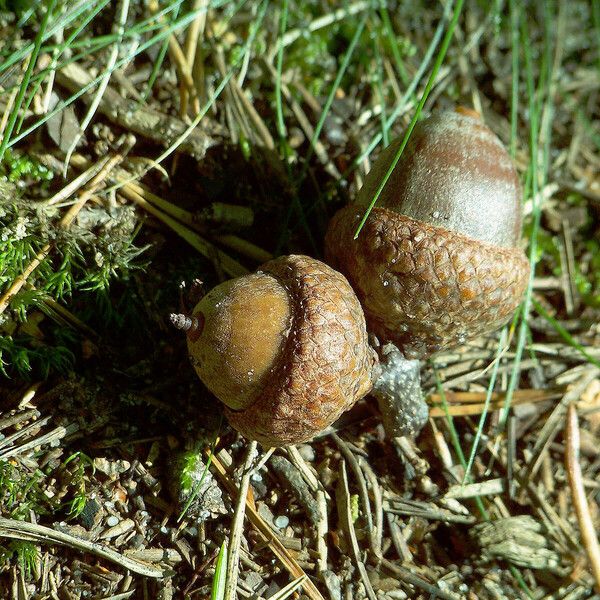Havainto
Määritys
Ehdotettu määritys
Ehdota toista määritystä
Et ole samaa mieltä ehdotetusta lajista, mutta sinulla ei ole muuta ehdotusta
Kommentit
Lisätiedot
Luontipäivämäärä
7. helmi 2024
Viimeksi tarkistettu
11. huhti 2024
Grotniki, near Łódź
It is primarily native to upland hills, slopes and ridges from Florida to Texas north to Maine, Ontario, Michigan and Minnesota; it is similar in appearance to red oak with which it may on occasion hybridize.
Edible plant - seeds cooked, are usually cooked before eating, though they can also be eaten raw; the roasted seeds of many Quercus species have been used as a coffee substitute.
Herbal plant - the inner bark contains quercitannic acid and is used medicinally, mainly as a mild astringent; the bark is astringent, disinfectant, emetic, febrifuge and tonic, it is used in the treatment of chronic dysentery, intermittent fevers, indigestion, asthma and lost voice, an infusion has been used as a gargle for sore throats, hoarseness colds, the bark can be chewed as a treatment for mouth sores, an infusion of the bark has been used as a wash for sore and chapped skin, a decoction of the crushed bark has been used as a wash for sore eyes.
Useful plant - a yellow dye, suitable for colouring natural fibres, can be obtained by boiling the inner bark; the dye is reddish-yellow according to one report and does not need a mordant(!); the heartwood is light brown, it is clearly demarcated from the nearly white sapwood, the wood is heavy, hard, strong, coarse grained; a valuable timber tree, it is sold as 'red oak' and used for making furniture, flooring, interior finish, barrels, railroad ties; the wood is a favoured fuel, burning well and giving off a lot of heat.
Jaettu
Ryhmät (15)

